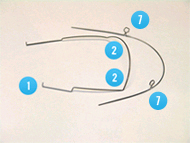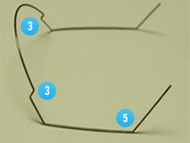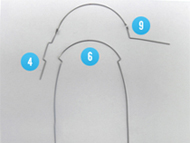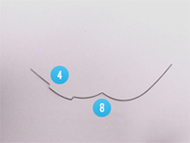TYPES OF BENDS POSSIBLE IN NITI WIRES
After 40 years of imposibility to bend the brittle and nonmalleable super elastic wires, Bendistal and Omni Pliers’ jaws were specifically designed to insert optimally-angled, permanent, and unbreakable bends that activate them. These bends can be inserted extra and intraorally, aims primarily at applying their forces in vertical and transverse directions on teeth. The vertical V-bends used clinically were cinching back NiTi wires without annealing or breakage. Then inserted them behind canines for unprecedented easy intrusion of the anterior and posterior teeth segments that dramatically simplify correction of most challenging orthodontic malocclusions. Inserting these V-bends before molar tubes can tip-back molars for anchorage, regaining space for 2nd premolar eruption. Also multiple V-bends insert step up and down bends as well.
While transverse V-bends elicit (Step in/out, Rotation movements, Crossbites midline expansion, and Mushroom lingual archwires). These pliers ability to bend NiTi wires has ended 4 decades of bending impossibility, that crippled applying their greatest forces in all directions on teeth, which discovered many new clinical triumph besides initial teeth alignment.
These are the types you can insert in super elastic archwires:

1. Cinch Back Bends
2. Intrusion Bends
7. Closing Loops

3.Step-Up-Down Bends
5. Molar Tip BAck Bends

4. Step-In-Out Bends
6. Mushroom Archwire Bends
9. Molar Rotation Bends

4. Step-In-Out Bends
8. Midline Cross Bite Bends